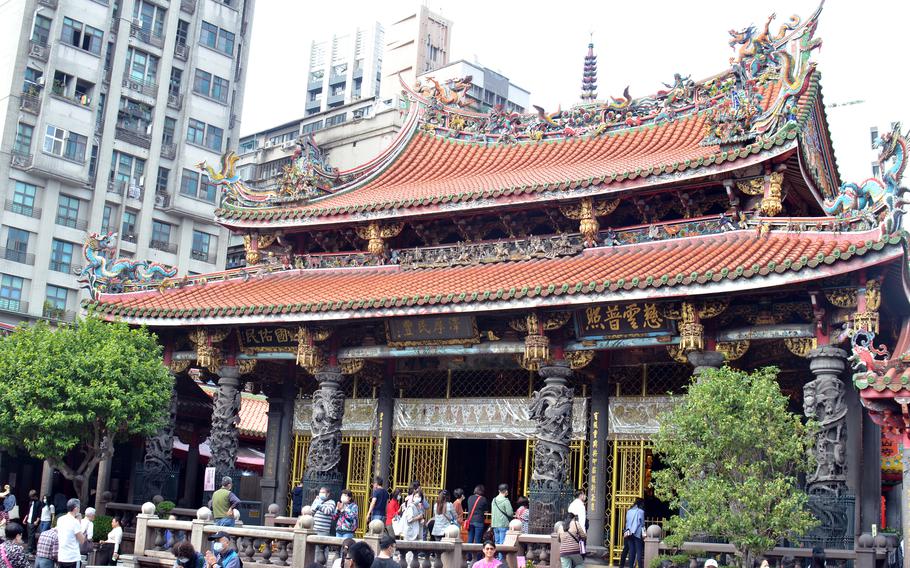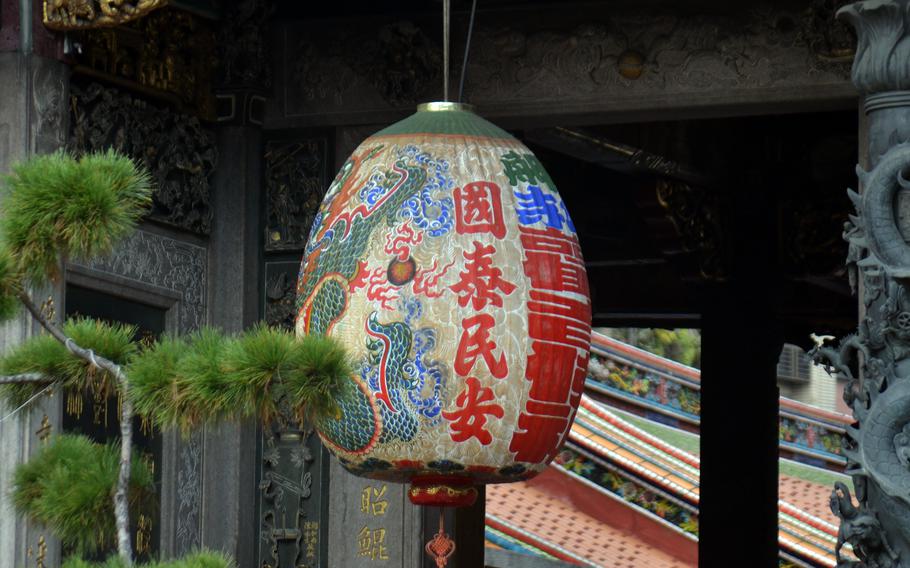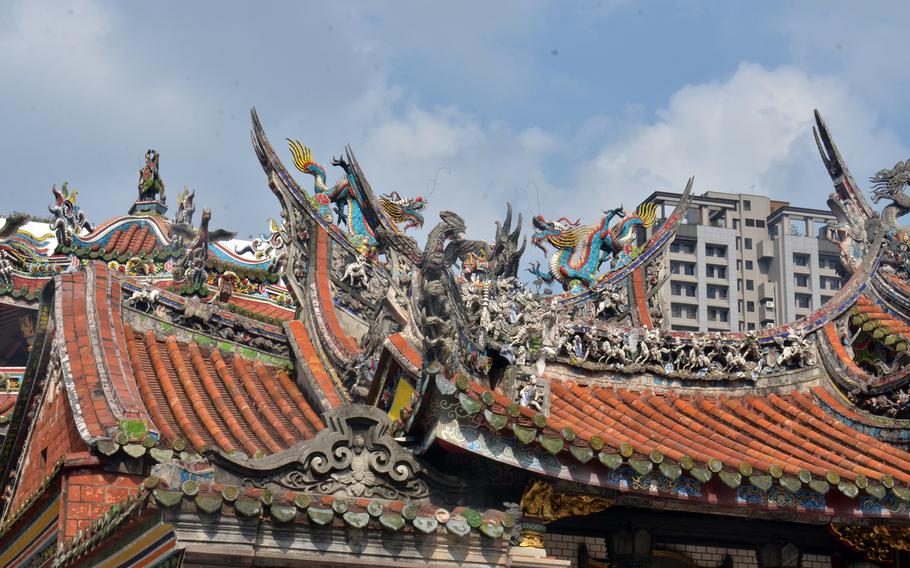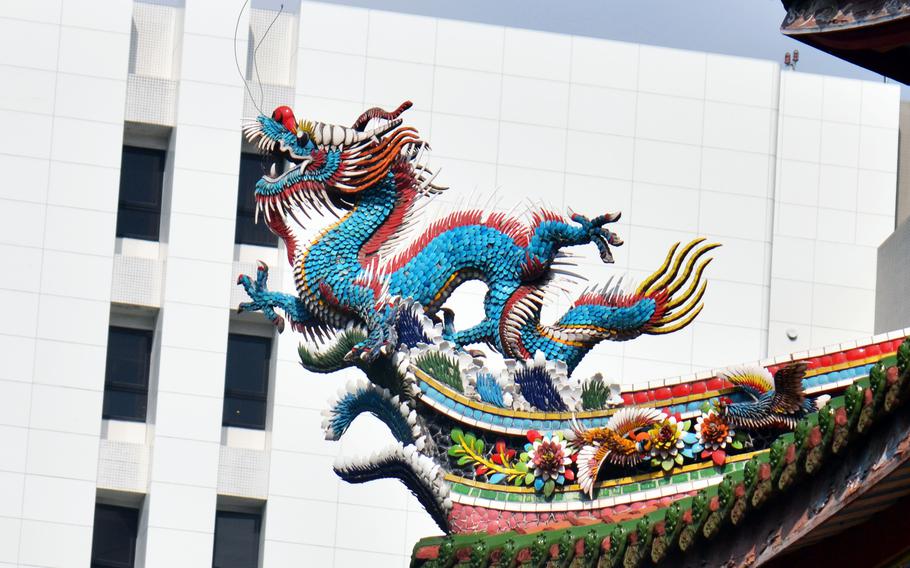
Lungshan Temple was established in Taiwan in 1738 during the Qing dynasty by settlers from mainland China and named after an older, 1,400-year-old temple in Fukien province. (Seth Robson/Stars and Stripes)
An air raid by the Allies during World War II destroyed much of the nearly 300-year-old Lungshan Temple in Taipei, the capital of Taiwan.
The attack on June 8, 1945, burned down the temple’s main hall and part of an annex and destroyed many precious artifacts. But a statue of Guanyen, the Chinese goddess of mercy, remained intact.
U.S. air raids killed 5,592 people and wounded almost 9,000 on Taiwan between Oct. 12, 1944, and Aug. 10, 1946, according to the Taipei Times in 2015.
Lungshan was rebuilt after the war and Guanyen still stands inside the temple’s main hall, accompanied by statues of her many attendants.

Lungshan Temple in Taipei, Taiwan, rises above an array of colorful lanterns. (Seth Robson/Stars and Stripes)
From the street, the temple rises above an array of colorful lanterns. Inside the gate, visitors will find a fishpond, waterfall and rooftop sculptures of dragons and phoenixes before they head deeper into the complex.
The temple’s official website includes tips on how to make offerings to the deities inside and ask them for favors.
Lungshan was established in 1738 during the Qing dynasty by settlers from mainland China and named after an older, 1,400-year-old temple in Fukien province, according to the temple’s website.

Lungshan Temple in Taipei, Taiwan, has been damaged numerous times, including during World War II and in earthquakes and fires but it has always been rebuilt. (Seth Robson/Stars and Stripes)
It has been damaged numerous times, including during the war and in earthquakes and fires, but it has always been rebuilt.
When you’ve had your fill of prayer and incense, you can get a bite to eat at Liang Xi Hao, a restaurant founded in 1921 that serves Taiwanese street food on nearby Xiyuan Road.
There’s an English menu but locals order by circling items on a piece of paper. Once you’ve done that, head upstairs, find a table and wait for your food to arrive via dumbwaiter.
The restaurant’s most famous and delicious meal is its fresh squid soup. Locals put rice directly into the soup bowl.

A dragon adorns the roof of Lungshan Temple in Taiwan's capital. (Seth Robson/Stars and Stripes)
On the QT
Directions: A short walk from the Lungshan Temple subway stop on the Bannan Line.
Times: Open daily, 6 a.m. to 10 p.m
Costs: Free
Food: Liang Xi Hao serves Taiwanese street food for $2-$3 per meal.
Information: Online: lungshan.org.tw